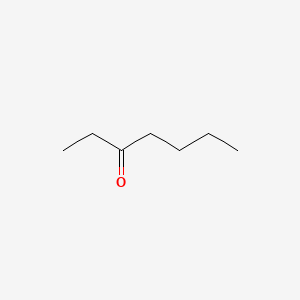| Authors | Title | Published | Journal | PubMed Link |
|---|---|---|---|---|
| de Souza FM et al. | Galantamine improves olfactory learning in the Ts65Dn mouse model of Down syndrome. | 2011 | Sci Rep | pmid:22355654 |
| Erhart S et al. | 3-Heptanone as a potential new marker for valproic acid therapy. | 2009 | J Breath Res | pmid:21383452 |
| Bruinsma M et al. | Jasmonic acid-induced volatiles of Brassica oleracea attract parasitoids: effects of time and dose, and comparison with induction by herbivores. | 2009 | J. Exp. Bot. | pmid:19451186 |
| Walker V and Mills GA | Urine 4-heptanone: a beta-oxidation product of 2-ethylhexanoic acid from plasticisers. | 2001 | Clin. Chim. Acta | pmid:11282094 |
| O'Donoghue JL et al. | Further studies on ketone neurotoxicity and interactions. | 1984 | Toxicol. Appl. Pharmacol. | pmid:6546457 |
| Geller I et al. | Effects of methyl n-butyl ketone and ethyl n-butyl ketone on fixed ratio, fixed interval performance of rats. | 1981 | Proc. West. Pharmacol. Soc. | pmid:7255428 |
| Katz GV et al. | Comparative neurotoxicity and metabolism of ethyl n-butyl ketone and methyl n-butyl ketone in rats. | 1980 | Toxicol. Appl. Pharmacol. | pmid:7361307 |
| Beny JL | [Bioassay for acetylcholine from the rat cervical sympathetic ganglion (author's transl)]. | 1978 | J. Physiol. (Paris) | pmid:745143 |
| Martin LE et al. | Quantitative determination of salbutamol in plasma, as either its trimethylsilyl or t-butyldimethylsilyl ether, using a stable isotope multiple ion recording technique. | 1976 | Biomed. Mass Spectrom. | pmid:963277 |
| pmid: |
3-heptanone
3-heptanone is a lipid of Fatty Acyls (FA) class.
